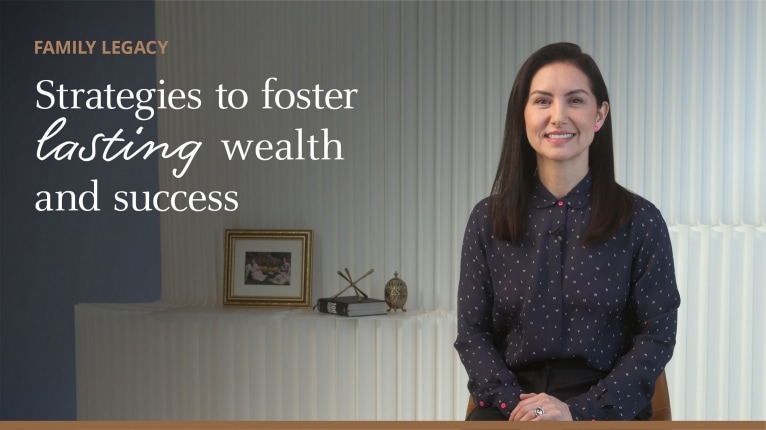Planning What to do with an unexpected large sum of money
- If you unexpectedly receive a large sum of money, the urge to spend it on a luxury purchase can be tempting. However, acting thoughtfully and practically in its allocation could be a boon to your financial health.
- Paying down debt, investing the money or growing an emergency fund are all solid options that can bring you closer to your financial goals.
- Even if you opt to do nothing with it right away, there are savings alternatives to help manage it in the interim.

First things first: Revisit your financial goals
An unexpected windfall can be a blessing to your bank account – if you use it wisely, that is. And even though some extra padding in your personal savings account can be good, there may be more proactive ways to put this money to work for you.
Whether the money comes from an inheritance, a bonus at work, the sale of an investment, a tax refund or another source, emotions are likely to intensify in the immediate aftermath. However, this is the time to maintain a clear head and reassess your financial health and how this new lump sum could bolster your current plan.
You may even discover that you don’t want to do anything with the money right now. In that case, it’s often wise to store it in a higher-interest savings account, like a money market account (MMA) or certificate of deposit (CD). It’s worth noting, though, that one option may make more sense for your financial goals than the other, depending on how much money you’d like to keep in the account.
Once you’ve taken some time to map out the bigger picture, you can consider how to use these funds, in whole or in part. Here are a few options:
Pay down debt
Paying off debt like student loans, credit card balances and personal loans can be a great way to use a windfall. If you’re paying off high-interest-rate debt (e.g., 10%–15%), the money you’ll save by paying it off will likely be greater than the money you could earn by investing.
Two popular methods for tackling debt include the following:
- The avalanche method: This debt payment method ideally allows you to pay the lowest possible amount of interest. To use it, list all your debts in order of the highest interest rate to the lowest interest rate. Continue making minimum payments on all your debts, but make larger payments on your highest-interest-rate debt until it’s paid off. Once this has been done, tackle the next-highest-rate debt similarly, and so on.
- The snowball method: The snowball method is designed to prioritize your debts from your lowest outstanding balance to your highest outstanding balance. In other words, you start by paying off your smallest balances first, and work your way up from there.
Consult a banker to help you determine which method might work best for you and your financial circumstances.
Interested in money market funds?
Access a wide range of money market funds and thousands of other investments.
Invest, invest, invest
If you’re reading this, chances are you’re aware of how investing can help you reach long-term financial goals, such as saving for a down payment on a home or preparing for retirement. As for larger sums of money, here are two investing methods to consider:
- Lump-sum investing: Just as its name suggests, lump-sum investing is when you invest all or most of your money at once; this does not necessarily mean investing all or most of your money in one place, though, as you can use a lump sum to diversify your investments. However, this is somewhat risky, as you could bolster a portfolio like this right before an economic downturn. Historically, though, markets tend to trend upward over the long term. If you are indeed saving for the long term, then lump-sum investing may be the move for you.
- Dollar-cost averaging: With this method, you generally invest a fixed amount of money at fixed, periodic intervals. The gist behind this strategy is that you’ll be able to track longer-term market trends by exposing your investments to both good and bad days. This way you’ll buy less when the price is high and more when the price is low, leading to a lower average cost. Some benefits of this method include creating routine investment habits that may make you less prone to missing market timing. While one possible disadvantage compared to lump-sum investing is that you may miss out on larger gains that could have potentially resulted from a larger investment in the event of a big market jump, it’s crucial to keep your risk tolerance at the forefront of your investment strategy.
Weigh how comfortable you are with the risks that come with both lump-sum investing and dollar-cost averaging, keeping in mind the fact that staying invested for the long term is often more beneficial than not.1
Grow your emergency fund
Having an emergency fund that is both easily accessible and in a place with no investing risk, like a bank account, is generally a good idea. If you need immediate access to money in the event of a crisis, such as a layoff or health emergency, this will likely help you to cover your costs without relying on credit cards and going into debt.
Financial advisors generally recommend saving three to six months’ worth of take-home pay in your emergency fund. Consider beefing up your emergency fund with your windfall if you haven’t fully funded it yet.
Set it aside – for now
If none of the above fit your current financial situation, then putting your money into savings may be your best option. However, there may be better places to put this money than into a personal savings account, as these often do not generate the largest amounts of interest over the long term.
Money market accounts (MMAs) and certificates of deposit (CDs) are two taxable, higher-interest-generating savings accounts that won’t leave your lump sum merely collecting dust. Both are generally FDIC-insured and are typically well-suited to larger sums of money you don’t plan on touching for a while, making them a good strategy for an unexpected windfall you’re not sure how to use. Keep in mind, though, that each comes with its own pros and cons.
MMAs: While MMAs usually require higher minimum deposits and account balances, they also typically generate higher interest-rate yields. Many MMAs have a tiered interest rate rather than a flat interest rate, like traditional savings accounts. What this means is that your interest-rate yields generally have a positive correlation with your account balance; the higher your balance is, the higher your yields will be. Some downsides, though, as compared to more traditional savings accounts, are that you’ll often need both a higher minimum amount to open one (this can vary significantly, but some might be as high as $5,000) and you’ll also often need to maintain a higher minimum balance to avoid penalties or a reduction in the interest rate.
CDs: Think of a CD as an agreement between you and your bank, where you allow the bank to use your money for a specified length of time, in exchange for generating higher interest-rate yields that often surpass those of both MMAs and traditional savings accounts. What’s more, some CDs don’t require a minimum amount to open (although a minimum around $1,000 isn’t uncommon), nor do they always need a minimum balance to keep open. One big drawback, though, is their lack of flexibility and potentially steep early withdrawal penalties. While terms can be as short as a month, many require you to keep your money untouched for at least a couple of years or more and may impose hefty fees for taking the money out early.
A banker can expand on the benefits and drawbacks of these strategies, and offer advice on which type of account may work best for your financial plan.
The bottom line
In sum, there is no one right way to use a large sum of money, as it all depends on whatever works best for your personal financial situation. Before making any decisions, take ample time to consider your options. Moreover, consider asking your financial advisor for guidance – careful consideration and professional assistance are two solid ways to help you meet both your personal and financial goals.
Invest your way
Not working with us yet? Find a J.P. Morgan Advisor or explore ways to invest online.
Seth Carlson
Editorial staff, J.P. Morgan Wealth Management
Editorial staff, J.P. Morgan Wealth Management
Seth Carlson is on the editorial staff of the J.P. Morgan Wealth Management (JPMWM) content team. Prior to joining JPMWM, he worked in higher education admissions and enrollment management marketing at Mercy University in New York. There ...More
Footnotes
-
1
J.P. Morgan Asset Management, “Principles for successful long-term investing.” (2025)



